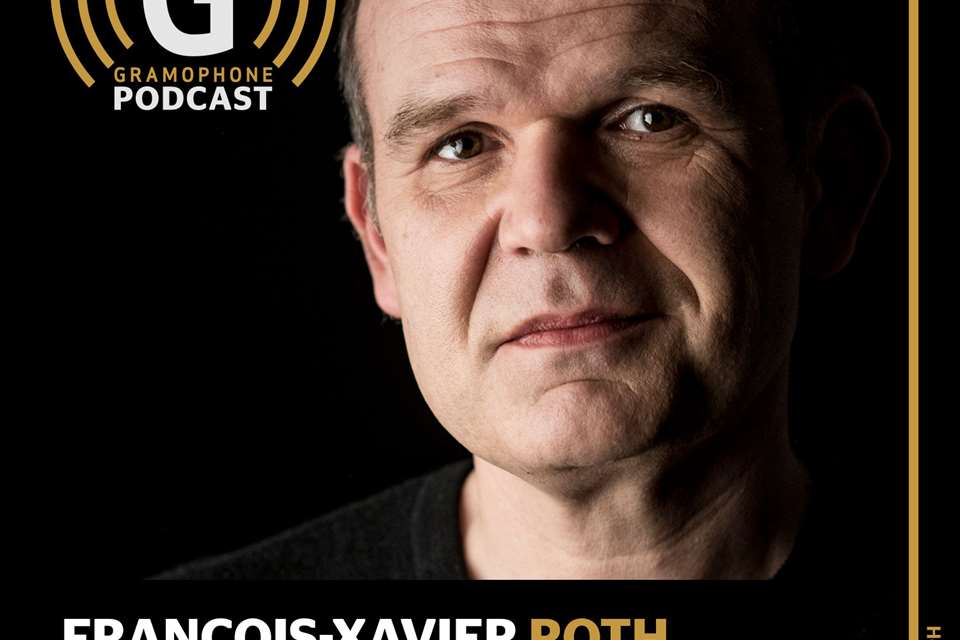Mahler from a new perspective, with François-Xavier Roth
Hugo Shirley
Tuesday, September 6, 2022
François-Xavier Roth and Les Siècles’ period-instrument recording of Mahler’s Fourth Symphony looks set to bring about a renewed understanding of this music, finds Hugo Shirley
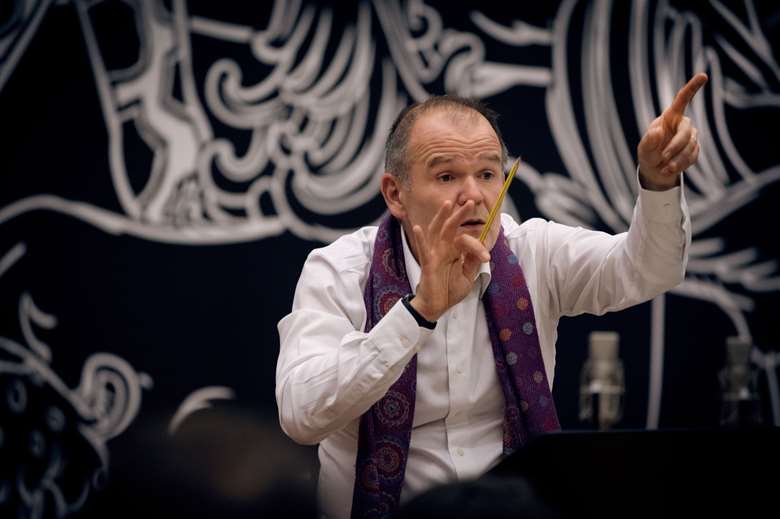
The ever-growing recorded catalogue of Les Siècles would be the envy of any ensemble, let alone a period-instrument orchestra. But Les Siècles, which celebrates its 20th anniversary next year, is no ordinary period-instrument orchestra, built as it is upon the idealistic desire to be equally adept and informed in tackling music from across different centuries – as its name implies. Indeed, in just the four years since Mark Pullinger last interviewed the ensemble’s founder and conductor, the charismatic François-Xavier Roth, for Gramophone, it has added not only to the number but also to the range of recordings: there’s been more Ravel (including last month’s Recording of the Month) to join its Gramophone Award-winning Daphnis et Chloé, Debussy’s Pelléas et Mélisande and symphonies by Beethoven, Berlioz, Mahler and Saint-Saëns.
All those recordings have appeared on Harmonia Mundi, the orchestra and conductor’s home label for half a decade now, while they have also garnered one of their several Editor’s Choices with a rare opera, Saint-Saëns’s Le timbre d’argent, on the Bru Zane label. ‘The recording itself is tremendous,’ wrote Tim Ashley in his review of that set, ‘conducted with infectious energy by François-Xavier Roth, and with Les Siècles really relishing every shift of colour in Saint-Saëns’s gorgeous orchestral palette’ (10/20). Similar words, or variations on them, pop up with unerring regularity in reviews of their releases.
With gut strings or Mahler’s winds and brass, the effect of dynamics is so strong that you better understand their purpose
For their newest album, it’s a return to the heart of the Austro-German repertoire with Mahler. Having already recorded Titan, an early hybrid version of the First Symphony, they now turn to the Fourth, with Sabine Devieilhe as soprano soloist. When I sit down with Roth to discuss the release via Zoom, I begin by asking why he’s turning to the Fourth Symphony now.
‘It’s a symphony I’ve been looking at on the side for years,’ he tells me, ‘being a little bit scared of it – because of its simplicity, because of its structure and shape. Then suddenly I found my way to it and I wanted to do it with Les Siècles. Sabine Devieilhe is such a close friend and a partner in many projects. I said to her she would be ideal for doing it now, and she said, “Yes, let’s do it.” Sometimes the reasons for doing something can be very banal,’ he says in conclusion, with a shrug. It’s a refreshingly honest response.
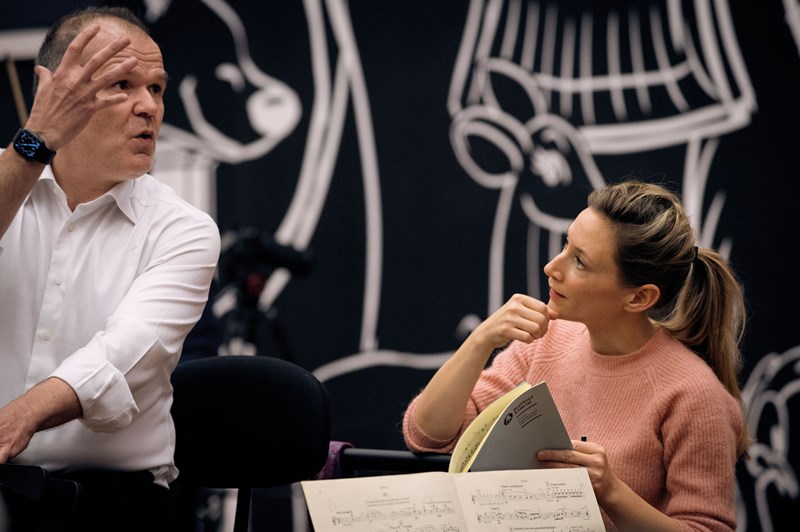
François-Xavier Roth and Sabine Devieilhe (photo: Jean-Baptiste Millot)
In conversation, even via a computer screen, Roth’s easy-going charm shines through, his excellent English playful and delivered with irrepressible Gallic flair. And while he talks with what seems like a permanent twinkle in his eye, his seriousness, intelligence and honesty are unmistakable. This becomes clear when I ask what, if anything, makes the Fourth – the most intimate of Mahler’s symphonies – suited to the approach of Les Siècles?’ He answers, straightforwardly: ‘This is difficult to describe.’
The lessons they learnt with Titan, he goes on to explain, are many. ‘When we performed Titan we could already feel the benefits of going back to instruments that Mahler used,’ he says. ‘He used them in a certain way that pushes them to their limits, for example when he asks the instruments to be played with their bells up, which produces such an amazing effect with the instruments he knew – much more so than with modern instruments.’
Roth also identifies a requirement for what he terms a ‘virtuosity of dynamics’, with Mahler making special demands on the players. ‘In one bar they have to play loudly and with lots of passion, and in the next bar they have to be something like invisible,’ he says, ‘and if you do that with either gut strings or the winds and brass he used to have as instruments, the effect is so strong that in the end you better understand the purpose of it.’
For a premiere, my eyes have to read music that nobody has heard before – this makes me look differently at scores by Mahler, Wagner, Debussy or Mozart
When it comes to sourcing those instruments, though, things are rarely straightforward. ‘It would have been much more practical’, the conductor admits, ‘if, let’s say, he had premiered all his symphonies with his Vienna orchestra. But that was not the case, starting with the First Symphony, which premiered in Budapest and then went to Hamburg. The Fourth was in Munich, the Fifth in Cologne. The Seventh, which I conducted last week, was premiered in Prague.’ There are more general questions to be answered, too, as Roth points out: ‘When a piece was performed for the first time in 1913, like Le sacre du printemps, do you use an instrument that was made in 1912 or one made in 1890?’
The ultimate decisions about which instruments to use in Les Siècles are made collaboratively, with the musicians presenting different options to the conductor, having located and often renovated the instruments themselves before trying them out in rehearsals. ‘I mean, the rehearsals!’ Roth says enthusiastically. ‘One day we have to do a movie about that! My musicians, they train and they are so professional and passionate, but it’s sometimes like starting from zero with the different instruments. We have surprises, and sometimes the instruments are not so steady. All these adventures are totally exciting, and totally exhausting – but at the end it’s great, even if doesn’t succeed on day one.’
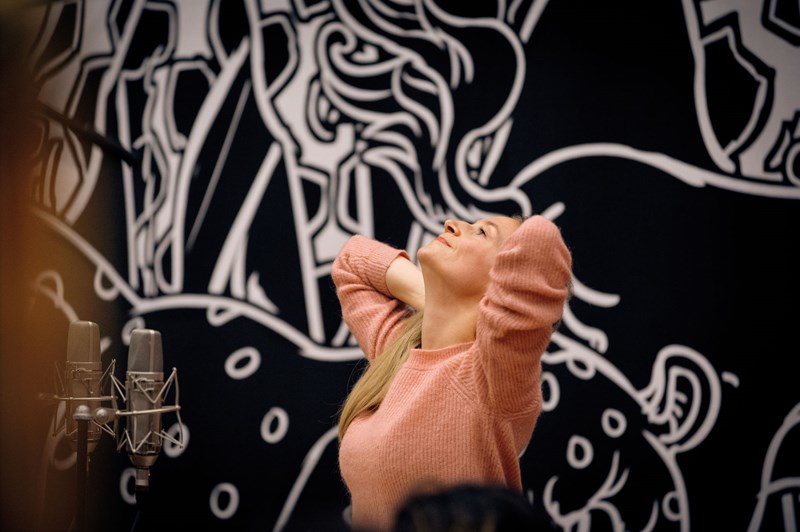
Sabine Devieilhe (photo: Jean-Baptiste Millot)
As well as the instruments, though, there’s also the need for his musicians to step into the shoes of their forebears from over a century ago. How do they go about that, I ask? ‘Portamento, vibrato, the way you articulate, the way you make your instrument sound – what’s normal these days is completely new. To play Mahler, we have to research not just the instruments but the people behind the instruments, what their habits were and their level of culture. For sure, we don’t have direct answers. It’s research, and we try to achieve a truth, but we won’t have the definitive truth – and that’s the magic of the music!’
What’s clear, I venture, having listened to an early edit of the new album, is that it’s not just the instruments and the textures, but also the whole approach to rubato – the ebb and flow of the pulse – that seem to have been pondered afresh from the conductor’s perspective as well. Roth responds with an admission: ‘The most difficult aspect of performing Mahler is trying to understand what he meant.’
It’s something he spent a great deal of time discussing, he tells me, with Pierre Boulez. ‘I was so lucky to be close to Boulez in his last years, and it’s something we discussed quite often. I asked him why, at a certain point, he had focused on Mahler’s music, and he told me he was fascinated by the way that Mahler describes the tempo journey, if we may call it that: the trajectory of the pulse or the tempo within a movement. Mahler very rarely lets us – the orchestra or conductor – have a long phrase without telling us something: don’t rush here; here, maybe a little less passion; there, don’t do a ritenuto. All these indications make the flow of the music something unique, and that was something Boulez was fascinated by.
The moments where we collectively take a decision and go for it, not knowing if it’s going to succeed, make a group very special
‘At the same time, Mahler leaves us lost when it comes to many things. So he decides to make a new phrase meno mosso but doesn’t indicate when the original tempo comes back. The fact that he doesn’t give metronome markings is also a very strong statement. The metronome is something so practical for a composer, but Mahler just doesn’t do it. He doesn’t want to give us a number; he tries to inspire our creative imagination. Those are the mysteries and enigmas in the scores. And there are many enigmas in the Fourth Symphony, which make it exciting and challenging. But I think generally speaking his music remains a labyrinth: you have to find your way.’
In finding a fresh approach to Mahler, Roth would seem to be at several further advantages, not the least of which is that he is so active in performing contemporary music. Does he also see it that way? ‘This is something that’s completely complicated to describe,’ he begins. ‘When I conduct Helmut Lachenmann or Boulez, or a new work by George Benjamin, and then I go back to Haydn or Bach, or if I visit Mahler having conducted, for example, Tristan, the journey at the end is an accumulation of experiences.’ He goes on, more specifically: ‘For sure, I have special eyes looking at a score because of my experience of so many different repertoires. For a premiere, my eyes have to read music that nobody has heard before, and this makes me look differently at scores by Mahler or Wagner or Debussy or Mozart.’
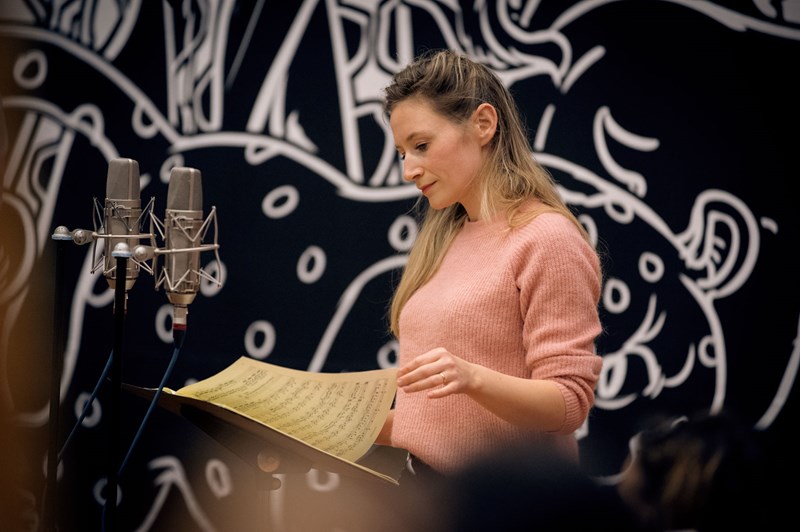
Sabine Devieilhe (photo: Jean-Baptiste Millot)
I mention Boulez again, who must have been an inspiration when approaching Mahler from a new-music perspective, and all Roth offers is, ‘Definitely,’ accompanied by a chuckle, playfully withholding – or so it feels – the longer answer that I’m after. He’s more forthcoming when I probe deeper into his own personal journey with Mahler. ‘When I was a kid in Paris in the ’70s Mahler was not very often performed,’ he tells me. ‘In the ’80s there were maybe some Mahler cycles in Paris, but not so much.’ His father, the renowned organist Daniel Roth, also played a role in steering his early tastes. ‘He always said to me: “Mahler’s too long. Richard Strauss is much more to the point!”’
So the young François-Xavier didn’t really discover Mahler until adulthood, and his first professional engagement with the composer was a modest one: ‘I think I was 19 or 20 – I played second piccolo in the First Symphony with the Orchestre Philharmonique de Radio France at the Salle Pleyel.’ But it’s also significant, Roth says, that the first complete set he heard was conducted by Michael Gielen, a predecessor at the SWR Symphony Orchestra Baden-Baden and Freiburg (Roth spent five years as Music Director of the orchestra before it was controversially disbanded as part of a merger with the Stuttgart RSO). ‘So my first approach to Mahler was, let’s say, with the opposite of Leonard Bernstein – with a conductor who was more intellectual and associated with the modern stuff.’
Roth has also recorded Symphonies Nos 3 and 5 with the Gürzenich Orchestra in Cologne, of which he has been Kapellmeister since 2015 (as well as Music Director of the city, with responsibility for the opera company too). The orchestra has a very distinguished Mahler history, having premiered the Fifth under the composer’s own baton, and Roth is very much aware of the special authenticity it brings to the works. ‘It’s very interesting and moving’, he says, ‘when you conduct an orchestra that claims to have been the first one. For sure, none of the musicians are the same, but the first time I conducted Mahler’s Fifth there was incredibly moving for me, because there’s still something, no doubt, that’s transported through the generations. So I have the Gürzenich-Orchester, which is almost 200 years old playing modern instruments; and then my 20-year-old French orchestra performing on instruments from Mahler’s time. For me that’s very interesting: a bit schizophrenic, but very complementary as well!’
Roth’s Gürzenich Orchestra position is one of several posts he’s held alongside his work with Les Siècles. Before the stint with the SWR orchestra he was Associate Guest Conductor of the BBC National Orchestra of Wales. Since 2017 he’s been Principal Guest Conductor of the LSO, with which he’s had a strong association ever since winning its Donatella Flick conducting competition in 2000. That breakthrough came only shortly after Roth had begun his conducting studies, taken up alongside his career as a flautist, and that led to two years as assistant to John Eliot Gardiner after which, in 2003, he founded Les Siècles.
The most difficult aspect of performing Mahler is trying to understand what he meant – and there are many enigmas in the Fourth Symphony
The orchestra started, he has said elsewhere, almost as a ‘garage band’, meeting at first at his home. Did he imagine for one moment that nearly 20 years later it would be such a force on the international stage? ‘Not at all,’ he answers immediately. ‘I didn’t dare to think of our journey in terms of how we would be seen and appreciated. We all started out without being paid, without any support. We were there for the music and to try to do something differently.
‘We have gained recognition because of the instruments we use in repertoire which has never been visited by period-instrument orchestras. But the orchestra is so much more than that. It’s human beings who have travelled together through the years, so there is this deep connection between us. In rehearsals it can be so experimental that it’s scary, but these experiences, these moments where we collectively take a decision and go for it without knowing if we’re going to succeed, they make a group very special. I think that’s also what audiences like about Les Siècles on stage. Very often people come to me and say they had the impression that it was our last concert, except everybody is smiling because we’re having such fun!’
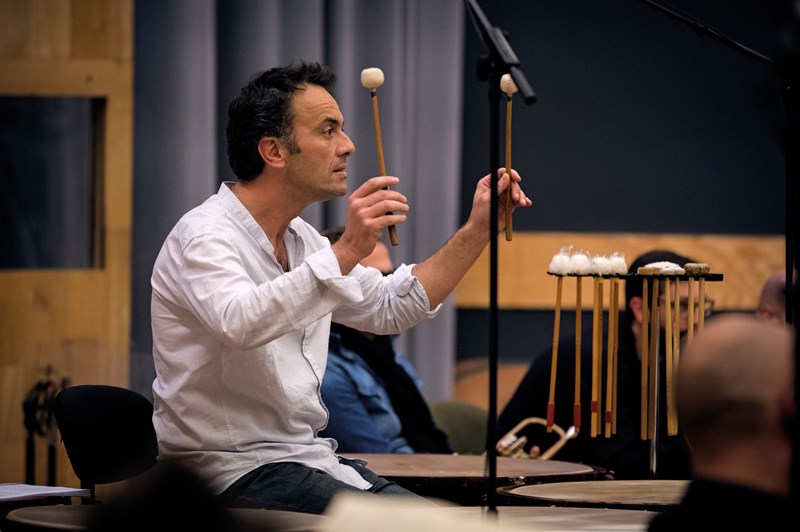
From the recording sessions (photo: Jean-Baptiste Millot)
And right from the start, they have had a process of recording that is predestined to preserve that special atmosphere, capturing performances live in concert and following up with patch sessions. ‘Nowadays, we do a few more patches, now that we are with Harmonia Mundi,’ Roth explains, ‘but the structure and the process of the recording has always been the same. Every recording we’ve done has had the same sound engineer, Jiri Heger, and I do the edit sessions with him every time.’
He doesn’t deny that it’s a model that was born of economic necessity, but there’s little quibbling with the artistic results. ‘In an ideal world I would certainly spend more time in a studio after an ideal tour, but I wouldn’t like to do egocentric studio sessions. And it’s true that the atmosphere of the concerts is something very interesting: we compare the takes between studio patches and the concert and very often you lose something, or you can’t recreate something you created in the concerts. Music-making is concerts and concerts are, for me, really the ideal balance between preparation and giving to the audience.’
And there’s certainly plenty for audiences to look forward to in the orchestra and conductor’s plans – a large proportion of which is due to appear on record, too. There will be further explorations of music by Debussy, Ravel, Dukas and Massenet, as well as Lalo and Roussel; the last partly as a result of the fact that the orchestra is now resident in the northern-French town of Tourcoing, on the Belgian border, where the composer was born. There’ll be more Berlioz, an exploration of the Second Viennese School, and Wagner, including a return to Der fliegende Holländer.
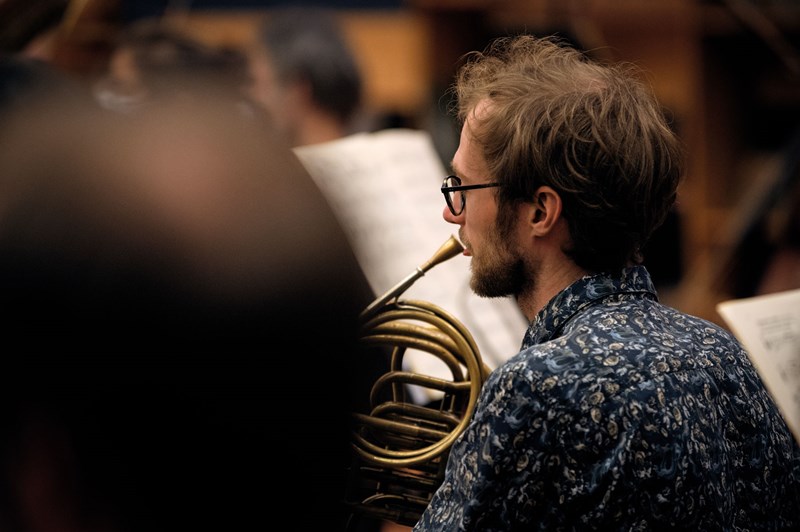
From the recording sessions (photo: Jean-Baptiste Millot)
The conductor reels off further plans: there’s more Mahler in his sights, as well as Schumann and Bruckner; more Beethoven, and a return to Stravinsky’s trio of works for the Ballets Russes, the orchestra’s early recordings of which, made for the label Actes Sud, were recently reissued by Harmonia Mundi. ‘We’re doing a big cycle of Ligeti concertos for the composer’s anniversary,’ he adds, ‘and we’re going to celebrate Boulez 100 in 2025 with two big masterpieces by him.’
It’s an impressive agenda, but happily there’s no sign of the ensemble losing its improvisatory and playful touch quite yet. ‘And there will certainly be surprises,’ he concludes, ‘because this nearly 20 years of Les Siècles has always been made of surprises!’
Read the review: Mahler's Symphony No 4
This article originally appeared in the August 2022 issue of Gramophone magazine. Never miss an issue – subscribe today




